Definition of E-learning
E-learning is the use of electronic technologies to create learning experiences (Horton, 2012). It is a broad definition of the field of using technology to deliver learning and training programs. It describes media such as CD-ROM, Internet, Intranet, wireless and mobile learning strategies. Some include Knowledge Management as a form of e-learning.
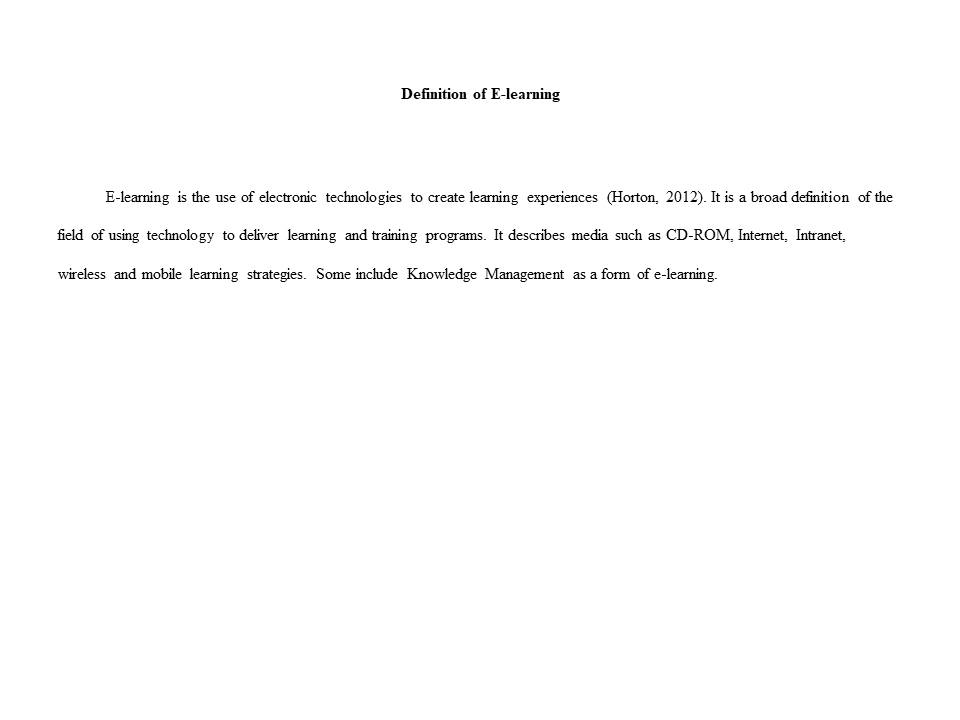
The Variety of E-learning
- Standalone Courses
- Virtual Classroom Courses
- Learning Game and Simulations
- Embedded e-Learning
- Blending Learning
- Mobile Learning
- Knowledge Management
- Social Learning
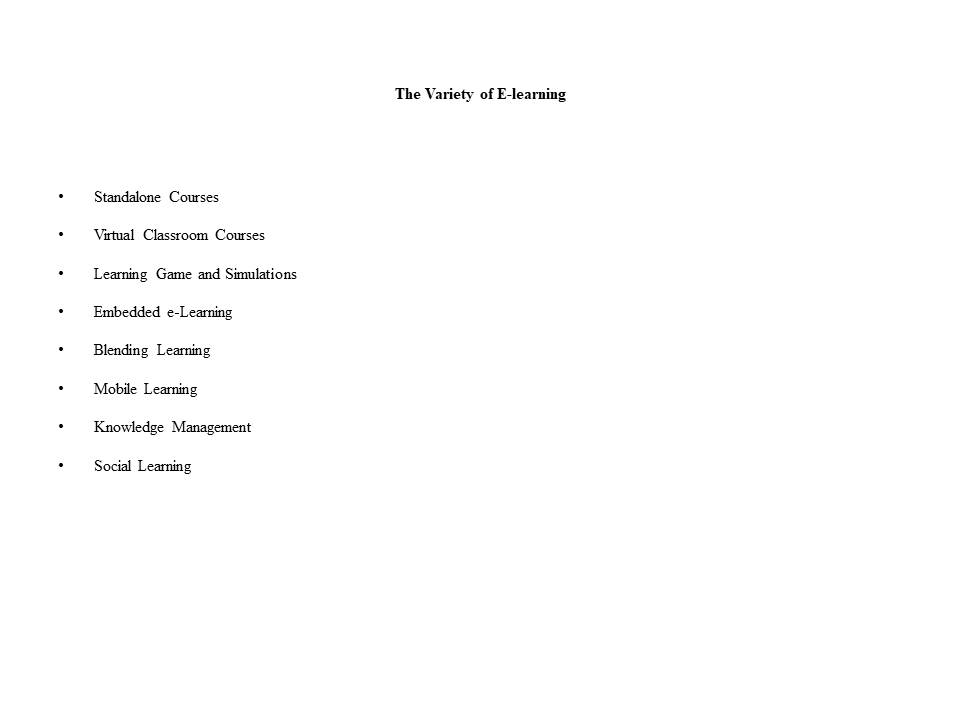
The Varieties of E-learning
- Standalone courses. These are courses taken by a solo learner. Self-paced without interaction with an instructor or classmates.
- Virtual-classroom courses. Online class structured much like a classroom course. May or may not include synchronous online meetings.
- Learning games and simulations. Learning by performing simulated activities that require exploration and lead to discoveries.
- Embedded e-learning. E-learning included in another system, such as a computer program, a diagnostic procedure, or online
- Blended learning. Use of various forms of learning to accomplish a single goal. May mix classroom and e-learning or various forms of e-learning.
- Mobile learning. Learning from the world while moving about in the world. Aided by mobile devices such as PDAs and smart phones.
- Knowledge management. Broad uses of e-learning, online documents, and conventional media to educate entire populations and organizations rather than just individuals. To learn more about practical knowledge management.
- Embedded e-learning. E-learning included in another system, such as a computer program, a diagnostic procedure or online accesses (Horton, 2012).
- Blended learning. This refers to the usage of several forms of learning to achieve one goal (Clark, & Mayer, 2003). This may mix classroom learning and e-learning or various forms of e-learning (Horton, 2012).
- Mobile learning. Learning from the world while moving about in the world. Aided by mobile devices such as PDAs and smart phones (Horton, 2012).
- Knowledge management. Broad uses of e-learning, online documents, and conventional media to educate entire populations and organizations rather than just individuals (Horton, 2012). It enhances further learning and more concrete organization of understanding (Ryder, & Base 1998).
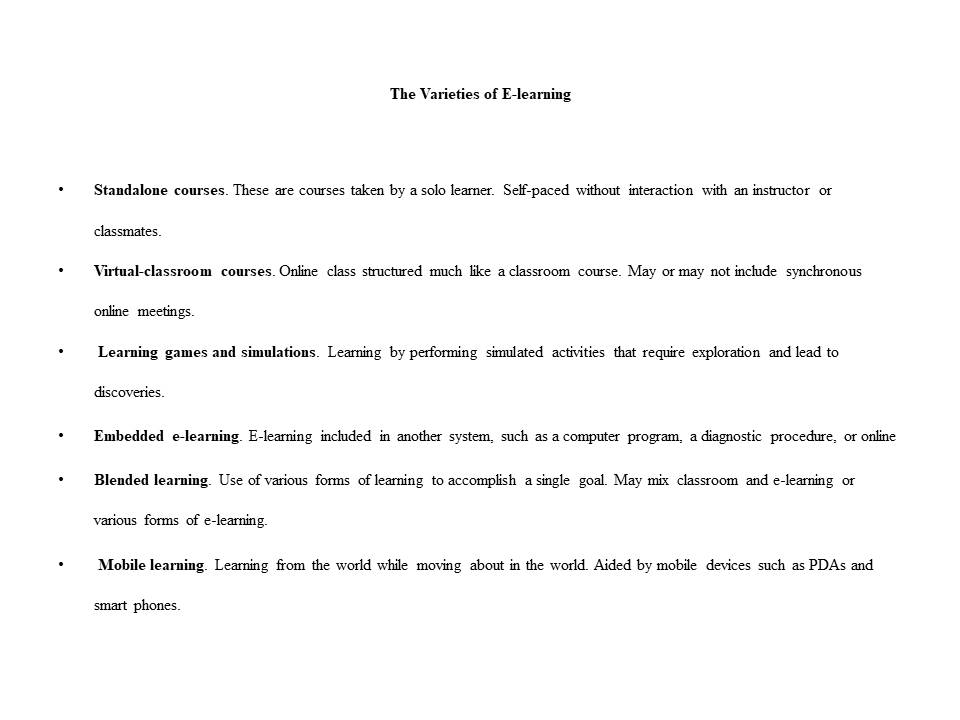
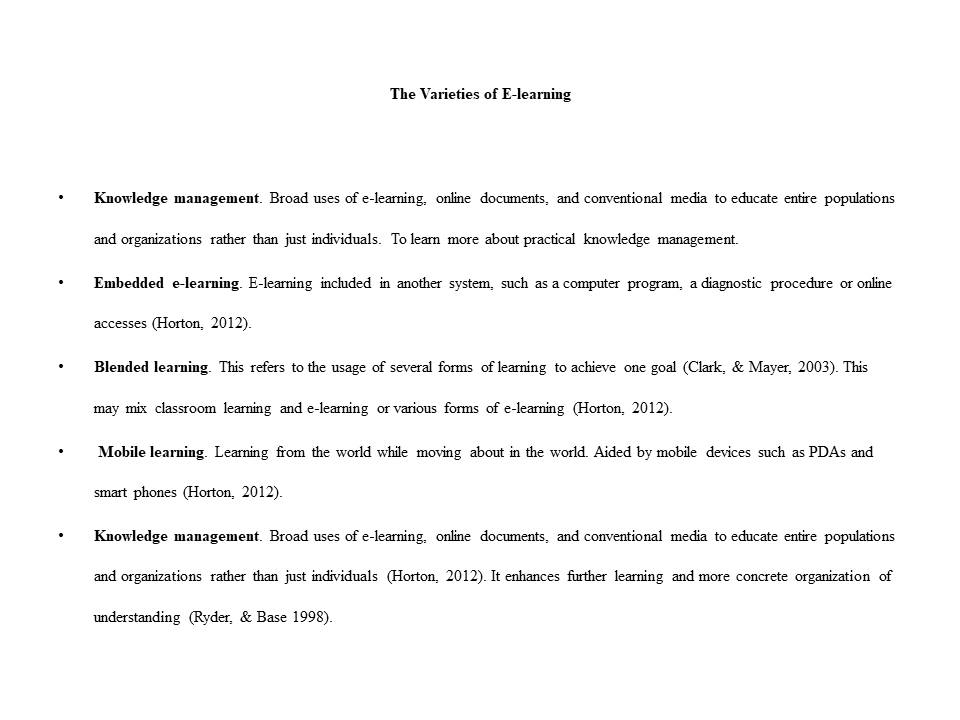
E-learning Design
E-learning design is a verdict of attaining knowledge governing personal performances, occupation and action. E-learning design affects the outcome.
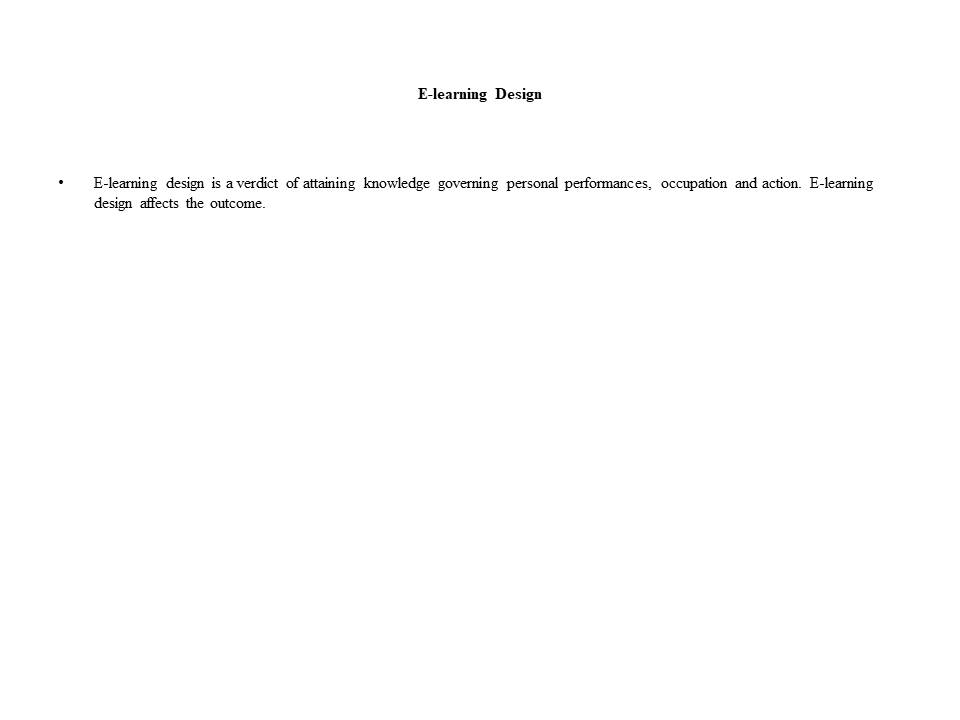
Design Perspectives and Influences
- Instructional design
- Software engineering
- Media design
- Economics
Instructional design participates to theories on the ways concerning people learning, application ways of the methods and theories targeted in implementation of the approaches (Laurel, 2003). The knowledge of how human beings learn can guide the selection and specification of new kinds of learning experiences such as simulations, learning games, online meetings, and discussion forums.
Software engineering helps us build reliable computer programs. Most people fail to recognize e-learning as a software. However, it is crucial to take e-learning as software too. It runs on a computer, just as a spreadsheet or word processor does. It has a user-interface and may draw content from a distant database. It transmits media over networks. Therefore, it requires the same careful design and quality control as other forms of software. Software engineering contributes the concepts of object design, usability design, and rapid prototyping.
Media design helps us in using digital media well. When the only media were the words on a chalkboard and the instructor’s voice, we did not need to “design” media. Today, we must select the appropriate mixture of text, graphics, voice, music, sound effects, animations and videos. We must, then, sequence the various media and synchronize complementary media.
Economics helps e-learning to deliver value. Operating e-learning costs money and requires funding accordingly. On the other hand, it generates revenue where readers make fund contributions for the services they receive. It takes time, people, and other resources to create, offer, and maintain. For these reasons, it must be developed under a budget and on schedule (Horton 2012).
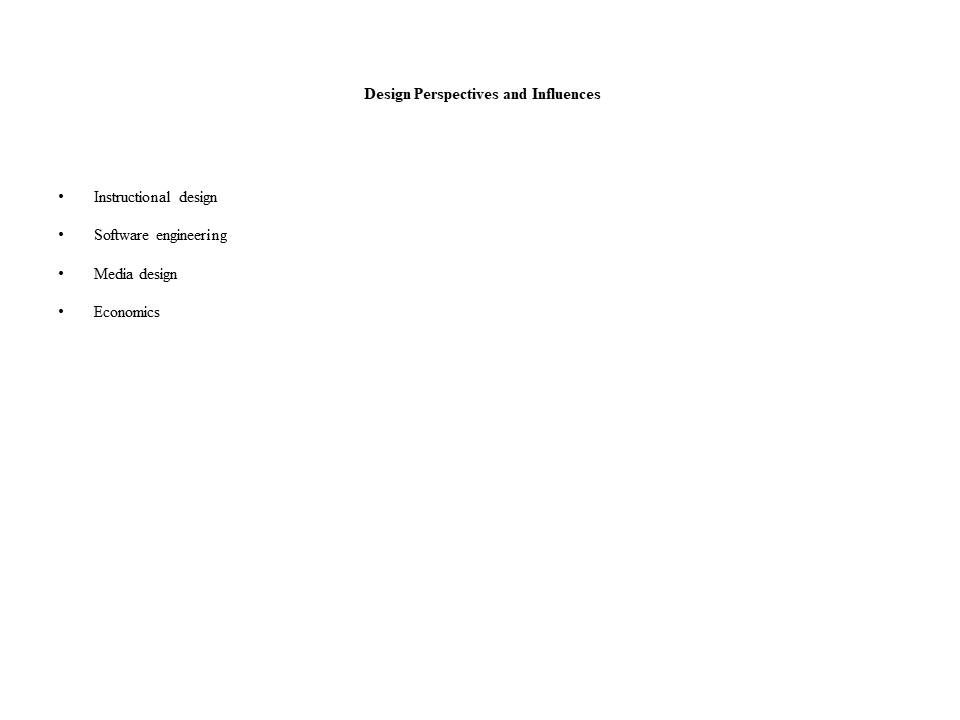
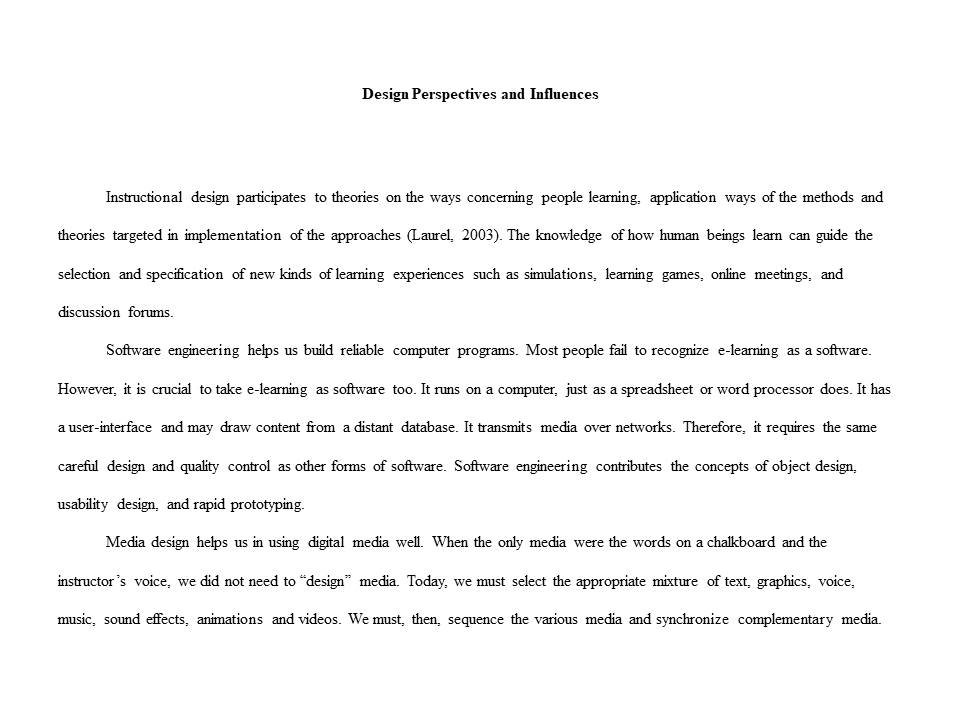
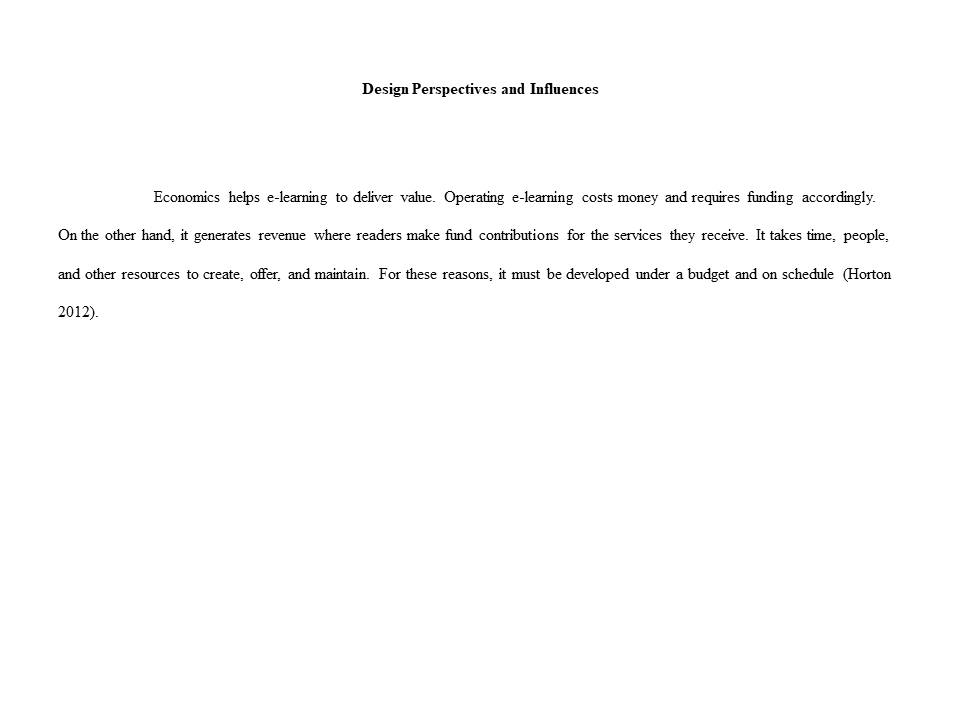
Instructional Design
- Instructional design calls for strategic arrangement of issues. These issues include selection, organization and specification.
- Instructional design translates the high level project goals to choices for course technology, content, and everything else (Horton, 2012).
- It directs the development of content and the selection of media.
- It, also, coordinates budget, program, and other features of task advancement (Smith, & Ragan 2005).
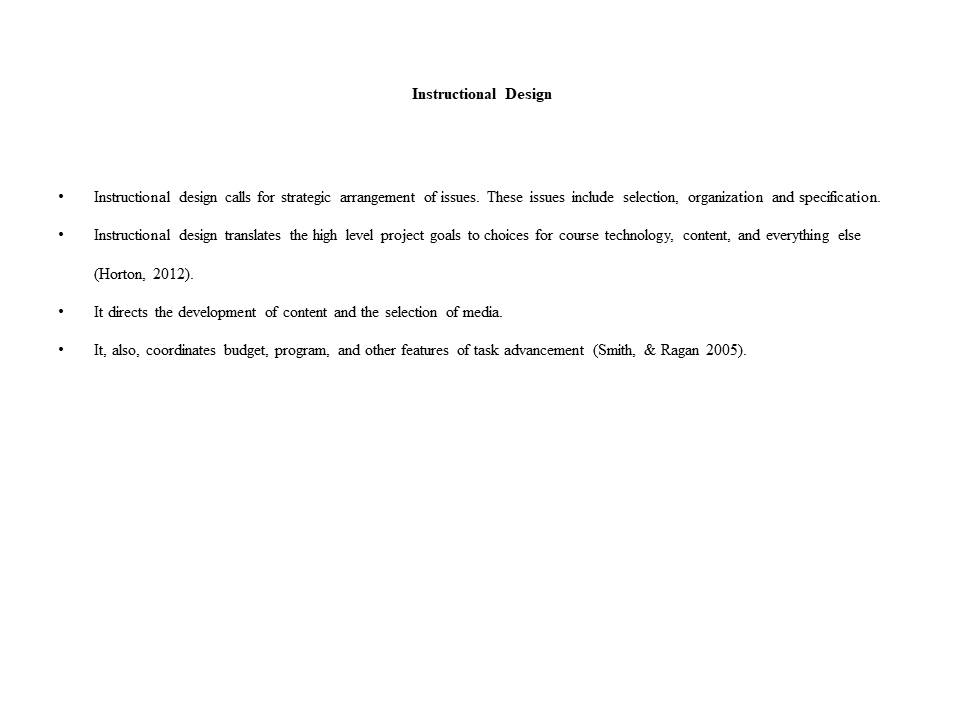
Alignment of Learning Goals
- It is very crucial to discern the aim and goals that one targets to achieve while learning (Lynch, 2004).
- Questions to consider
- What matters to the organization?
- How will e-learning design contribute to the goal (Horton, 2012)?
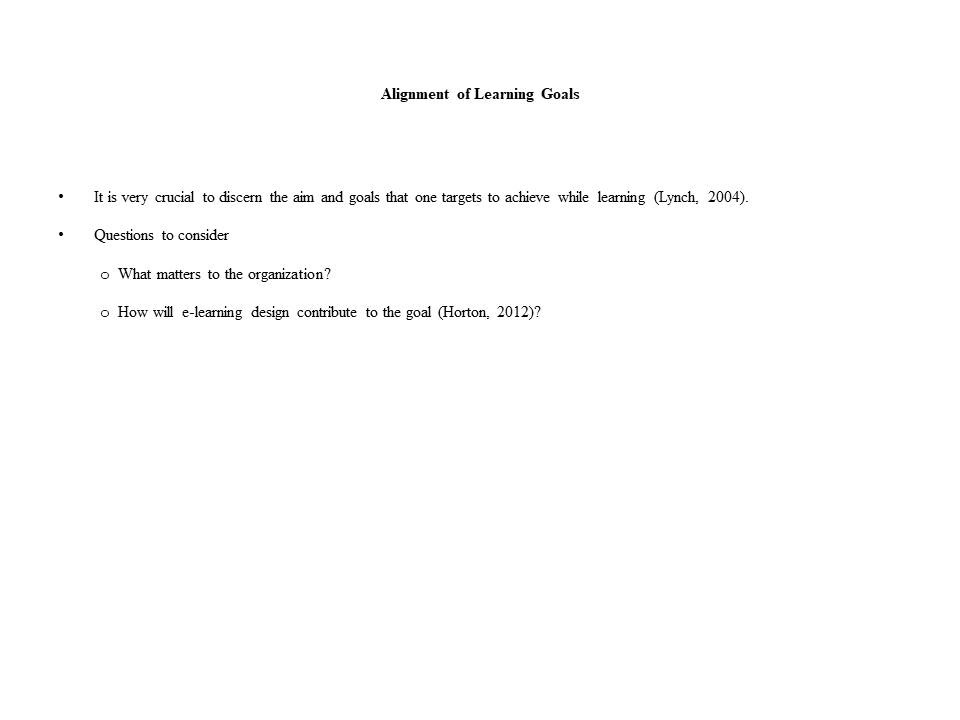
Type of Goals
- Financial – Monetary success of a for-profit or not for profit enterprise.
- Intellectual Capitol – Knowledge the organization controls.
- Customers – Consumers of the organization’s services or products.
- Operations – Efficiency and speed with which the organization performs its mission (Horton, 2012).
- Reputation – Public image of an organization.

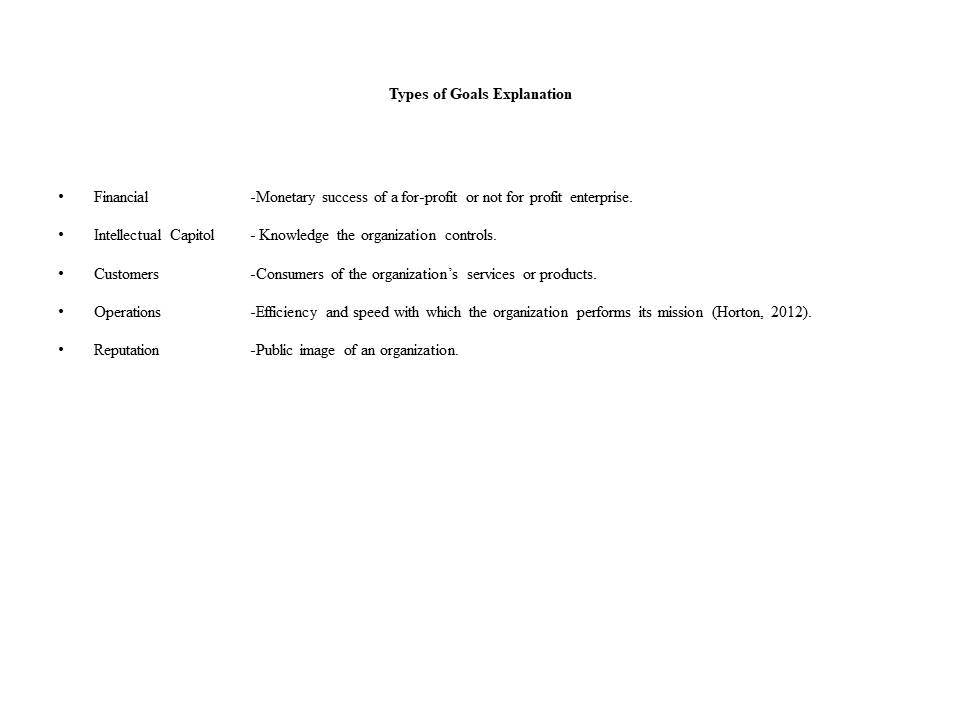
Learning Objectives
- The objectives:
- State the intent;
- Identifies the target learner and;
- Identifies the starting requirements (Sammon, 2008).
- Objectives provide identification of:
- Prerequisites;
- Learning activities and;
- Design tests are identified from the objectives.
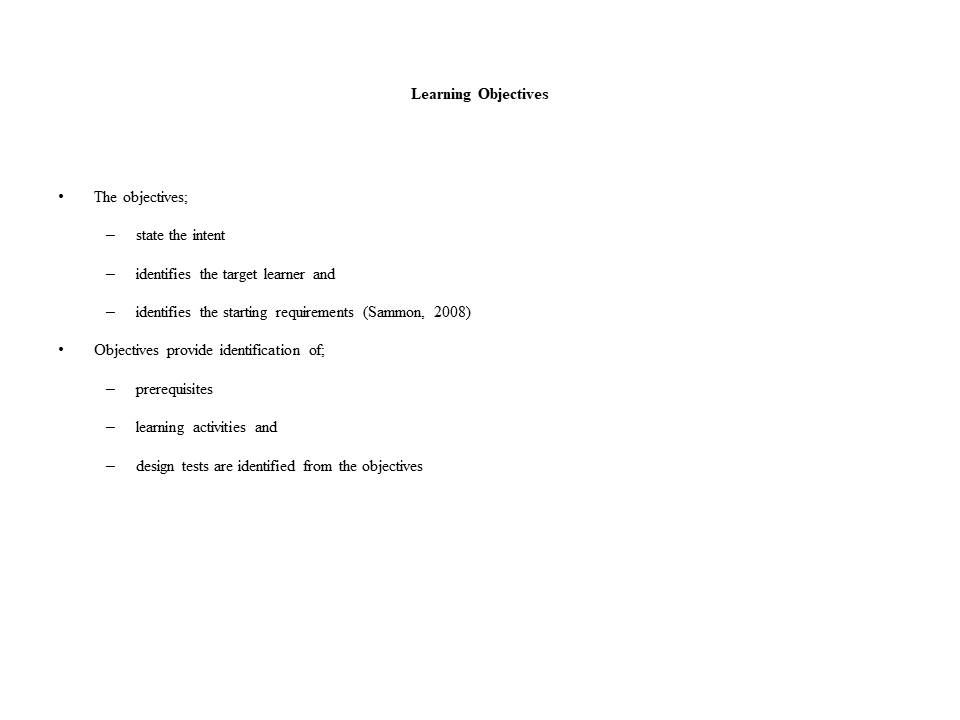
Selection of Teaching Sequences
- Bottom Up – In this sequence we teach prerequisite objective before objectives that require prerequisite. This sequence is so common in school learning that we often use for students whose model of learning is based on traditional schooling (Horton, 2012).
- Top Down – Learners are taught as if they have all the prerequisites. This sequence is used for efficiency of learning. Learners encounter the content that they need (Horton, 2012).
- Sideways – Learners traverse the subject freely, discovering and satisfying prerequisites as encountered. This sequence is less predictable and usable for discovery in adding excitement to the process. It resembles many work environments today and can help learners cope with a complex and dynamic situation (Horton, 2012).
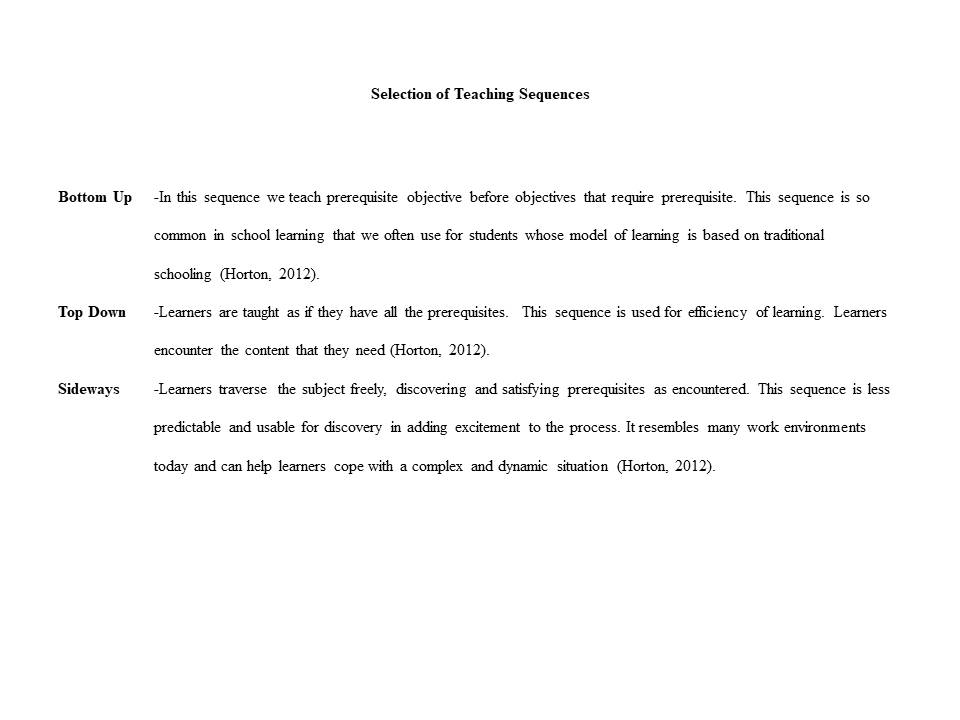
Selection of Learning Activities
- Activities are necessary to provoke learning experiences. Simple learning activities, used in combination, can accomplish difficult learning objectives (Watkins, 2005).
- Learning activities exercise basic skills, thought processes, attitudes and behaviors.
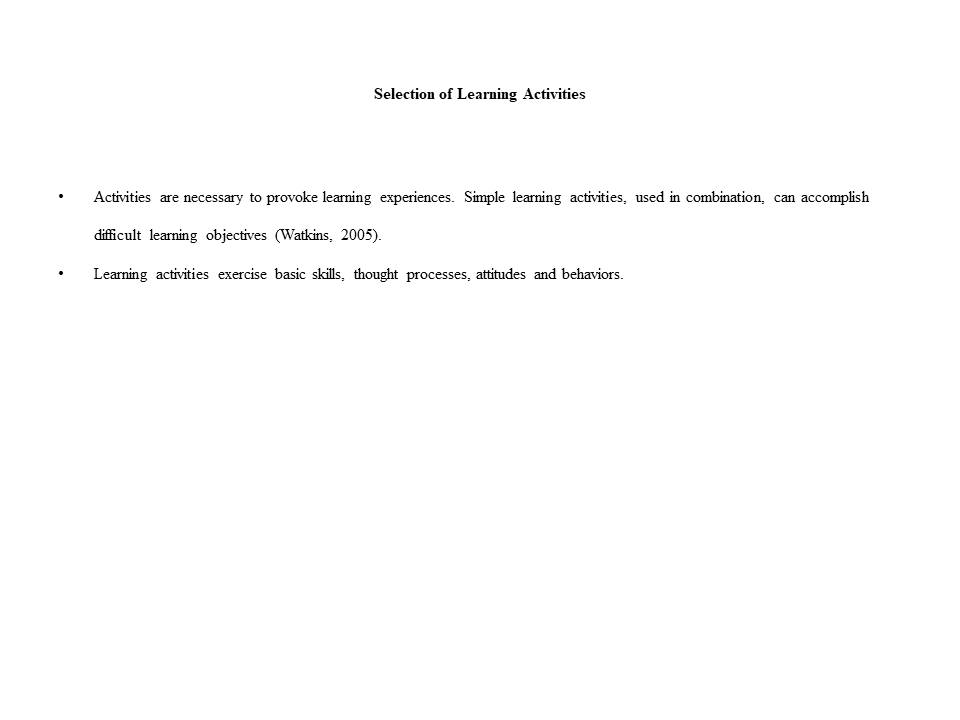
References
Clark, R. C., & Mayer, R. E. (2003). E-Learning and the science of instruction: proven guidelines for consumers and designers of multimedia learning. San Francisco, CA: Jossey-Bass/Pfeiffer.
Horton, W. K. (2012). E-learning by design (2nd ed.). San Francisco, Calif.: Pfeiffer.
Laurel, B. (2003). Design research: methods and perspectives. Cambridge, Mass.: MIT Press.
Lynch, M. M. (2004). Learning online a guide to success in the virtual classroom. New York: RoutledgeFalmer.
Ryder, J. M., & Base, O. (1998). Electronically assisted ground-based learning environment. Mesa, AZ: Air Force Materiel Command, Air Force Research Laboratory, Human Effectiveness Directorate, Warfighter Training Research Division.
Sammon, G. M. (2008). Creating and sustaining small learning communities: strategies and tools for transforming high schools (2nd ed.). Thousand Oaks, CA: Corwin Press.
Smith, P. L., & Ragan, T. J. (2005). Instructional design (3rd ed.). Hoboken, N.J.: J. Wiley & Sons.
Watkins, R. (2005). 75 e-learning activities: making online learning interactive. San Francisco: Pfeiffer.